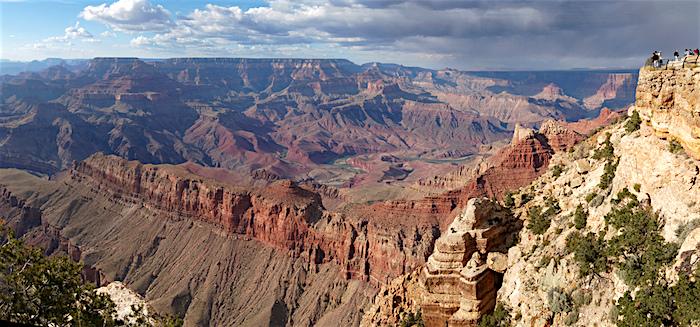
High heat and water woes are greeting visitors to Grand Canyon National Park/NPS
If the heat wave hanging over the Southwest and Southern California isn't enough of a problem for national park goers, at Grand Canyon National Park a break in a key water pipeline is forcing visitors to take water conservation measures.
Park officials are asking that all visitors and residents on the South Rim of Grand Canyon begin watching their water use. A break in the Transcanyon Pipeline was identified Tuesday, complicating matters after the breakdown of one of the Indian Garden pipeline water pumps that provides water to the South Rim storage tanks. The combination of these situations has resulted in immediate water conservation guidelines for all consumers on the South Rim. The North Rim is unaffected by these issues.
Due to the Transcanyon Pipeline break, there is no water available at Cottonwood Campground or Manzanita Rest Area. Day hikers and backpackers should be prepared to carry all drinking water or be able to treat creak water for drinking purposes. Phantom Ranch currently has water but is operating under water conservation measures.
The National Weather Service has issued an excessive heat warning for parts of Grand Canyon through Wednesday for areas below 4,000 feet in the canyon, including Phantom Ranch. Temperatures at Phantom Ranch could reach 117 F/47 C. Indian Garden temperatures could hit 109 F/43 C. Hotter than normal temperatures will also hit the rims, with highs of 97 F/36 C on the South Rim and 91 F/33 C on the North Rim. Hot temperatures are expected to last throughout the week.
Water conservation measures include; turning off the water while you shave or brush your teeth; running dishwashers or washing machines with only full loads or in eco mode if available; taking shorter showers; not watering lawns or washing cars; filling the sink with water while washing dishes and; reporting drips, leaks or other water loss to appropriate offices. All visitors and residents are requested to implement water conservation measures immediately in homes, hotel rooms, and at the campgrounds.
The National Park Service encourages all hikers to be prepared and to Hike Smart. More information is available on the park website.
Grand Canyon National Park has a large and complex water utility system that provides water to the over 5 million visitors a year in addition to the 2,000-plus residents that live within the park.



Add comment